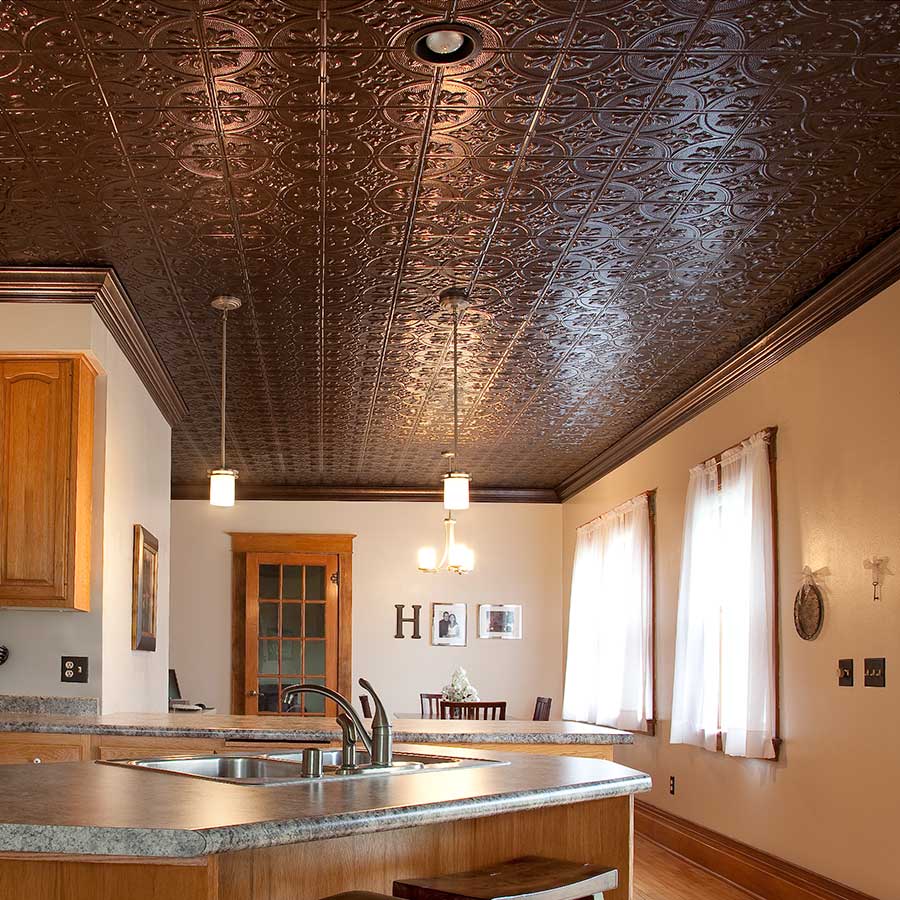How to Choose the Right Ceiling
Wondering how to choose the right ceiling? If you’ve made the decision to make over your ceiling or add a new one, getting started can be overwhelming. Start with the installation method you’ll use and whether you want a decorative or acoustic product.
There are two ways to install a ceiling:
One way is a suspended, or drop ceiling, with a grid. Drop ceilings hang below an existing ceiling with wires or hangers and consist of grids in which tiles are inserted. These are an easy job for the DIY’er and are appealing because they can hide an ugly or damaged ceiling and they conceal electrical and plumbing, yet still allow access for repairs. There are a number of acoustic and decorative tile options for this method of installation which works well in basements and laundry rooms.
The other installation method is via a direct-apply product without a grid. With this method, panels are glued or nailed up to an existing drywall or plaster ceiling. Direct-apply ceilings work well in kitchens, dining rooms and bedrooms.
Drop ceiling materials include:
Suspended real tin ceilings
Suspended tin ceiling systems consist of tiles that are authentic recreations of the tin ceilings of yesteryear that are suspended or dropped into a grid. Tin ceilings provide an old-world charm and are perfect for dens, living rooms, bedrooms, kitchens and dining rooms. Color-matching grids and grid covers are available for some choices. Great Lakes Tin Ceilings are an example of these types of ceilings.
Faux tin tiles
Faux tin tiles look like tin but are made of durable vinyl for a cost-effective, easy to install option. Fasade faux tin tiles are an example of this type of panel.
Faux wood panels
Faux wood panels look like real wood but are a fraction of the price. They are available in many different styles and colors.
Real wood ceilings
Real wood ceilings provide a stately and traditional look to any space. Custom jobs are expensive and are not recommended for the typical Do-It-Yourself homeowner. Evoba, however, has a modular assembly and installs like a conventional tee-bar grid system. Its prefabricated grid components eliminate custom mill work costs. You get a custom-crafted look at a low cost that’s easy to install.
Suspended performance options
Performance ceilings are those that provide special protection from mold or mildew, are washable or possess other high-performance characteristics. One such product is Genesis which is made of PVC with a smooth or decorative, embossed surface texture. They are guaranteed not to water-stain, bow, swell or rot so they’re ideal in moist and humid areas.
Suspended acoustical options
Suspended acoustic ceilings are typically white, textured mineral board panels suspended from a metal grid system. This option is generally the least expensive and also provides a measure of acoustic control. Because they are not waterproof, they can damage and stain easily and can allow mold and mildew growth. Mineral board tiles require new or existing grid.
All of the suspended options above require a new or existing ceiling grid system.
What do you think of all these options? Let me know about your ceiling projects in the comments!

